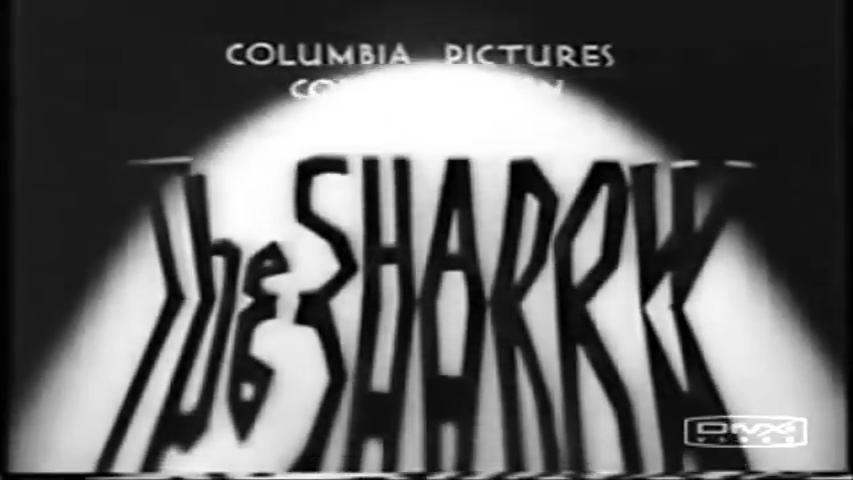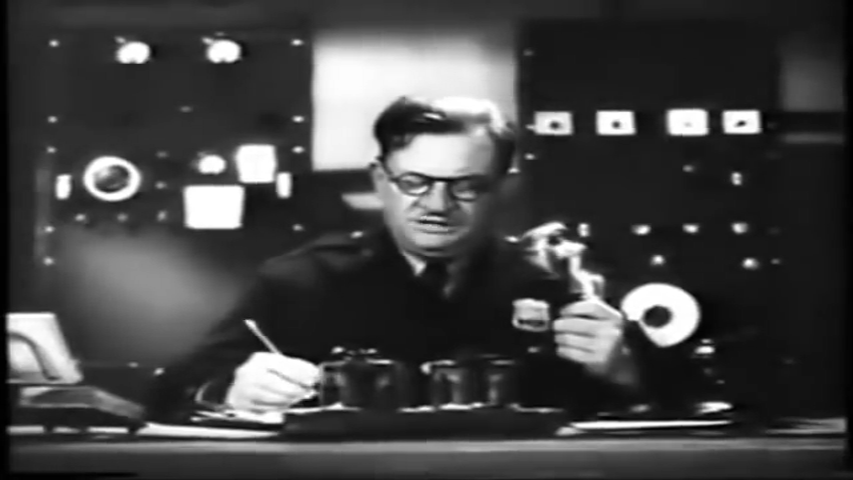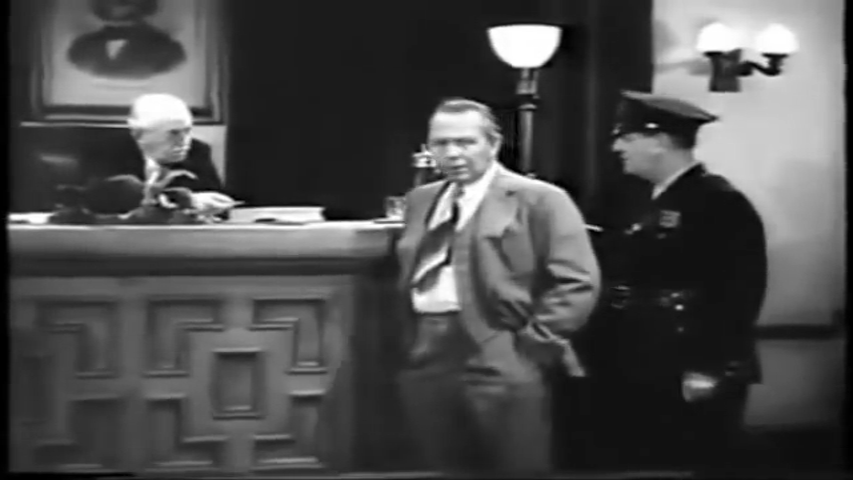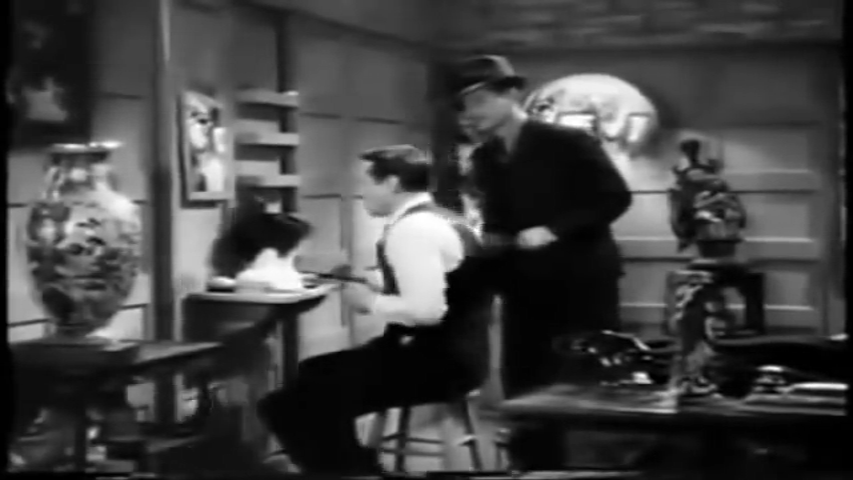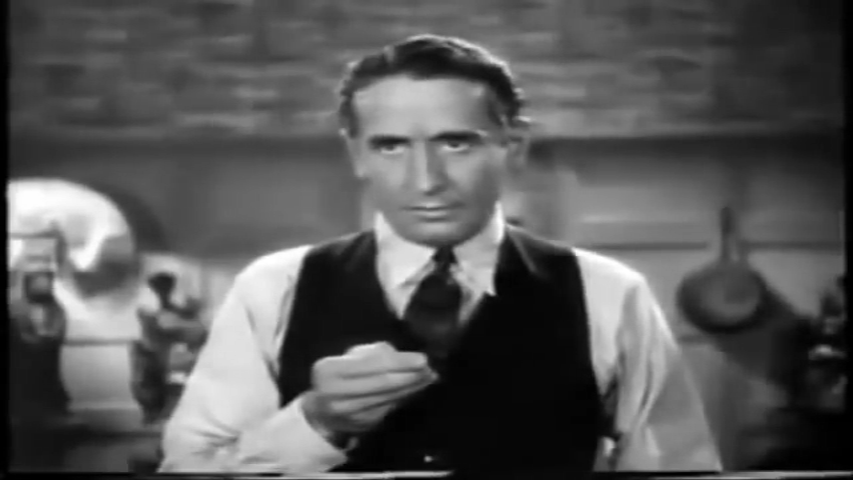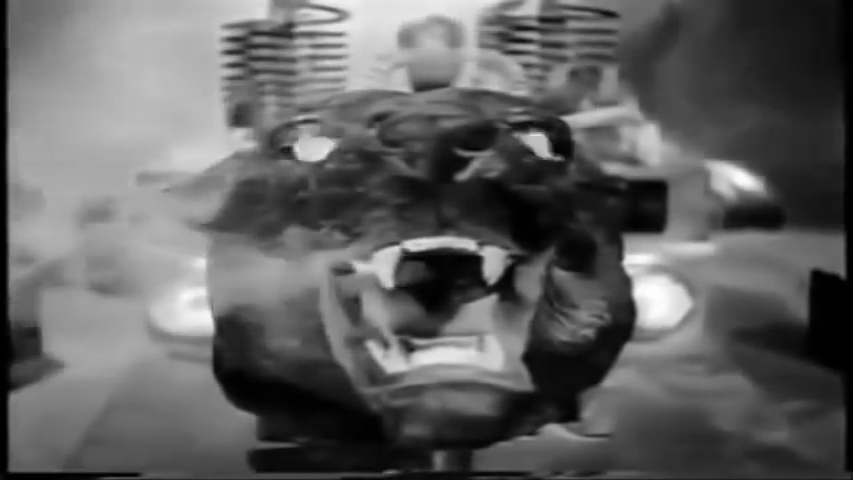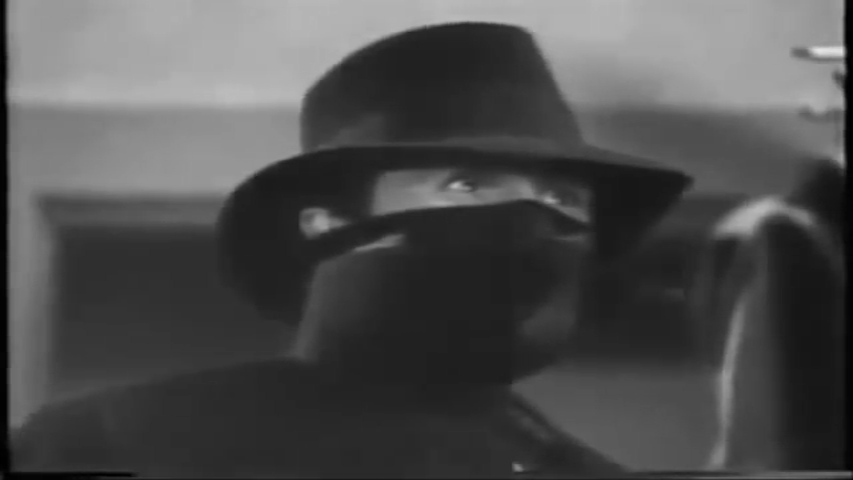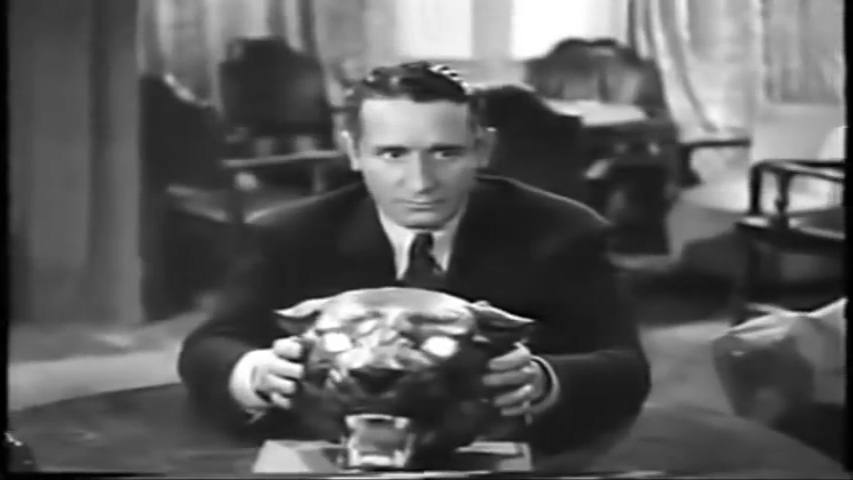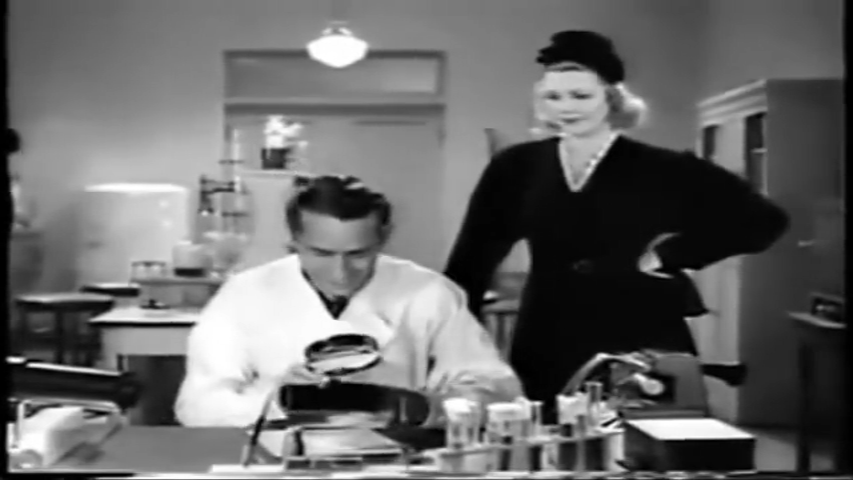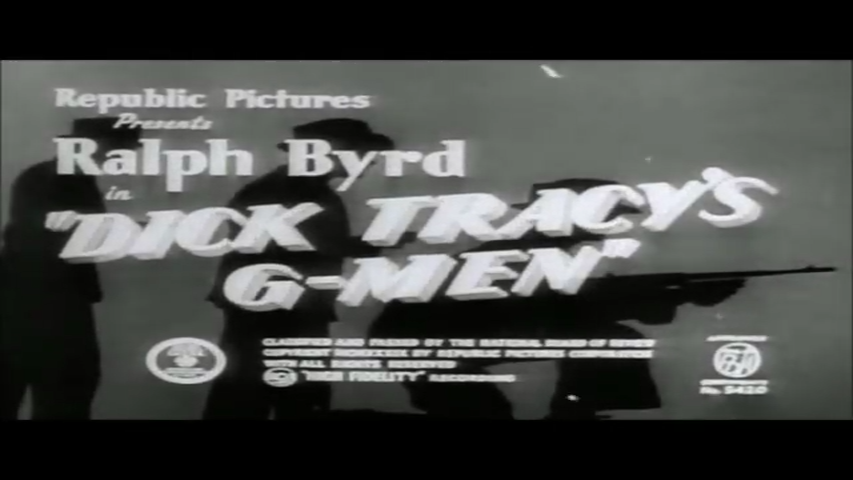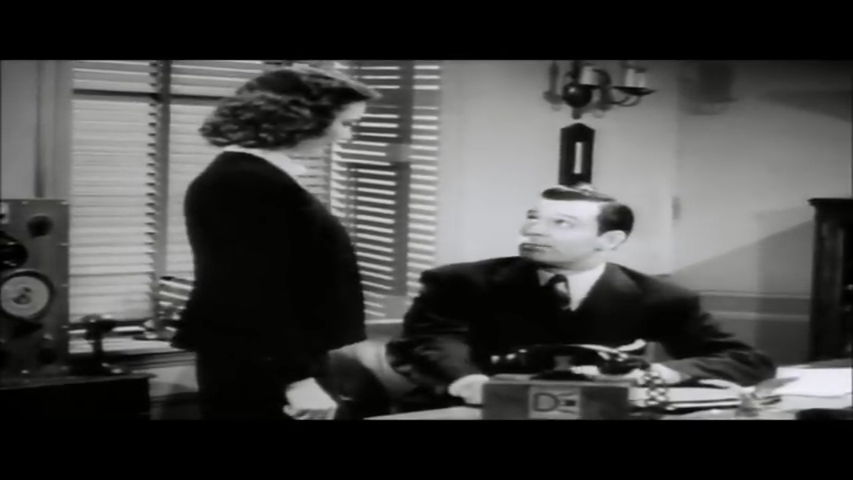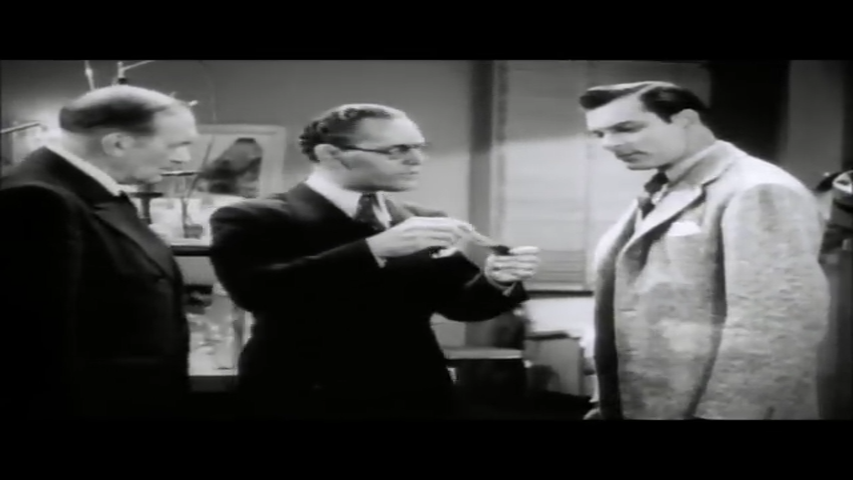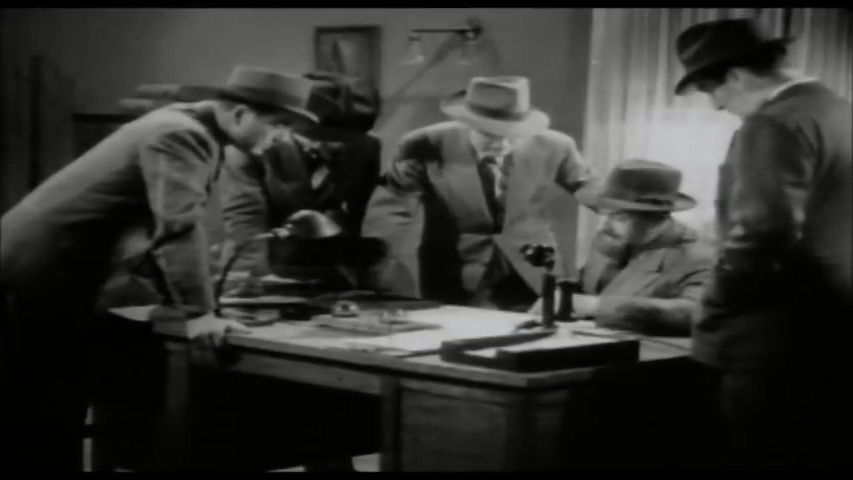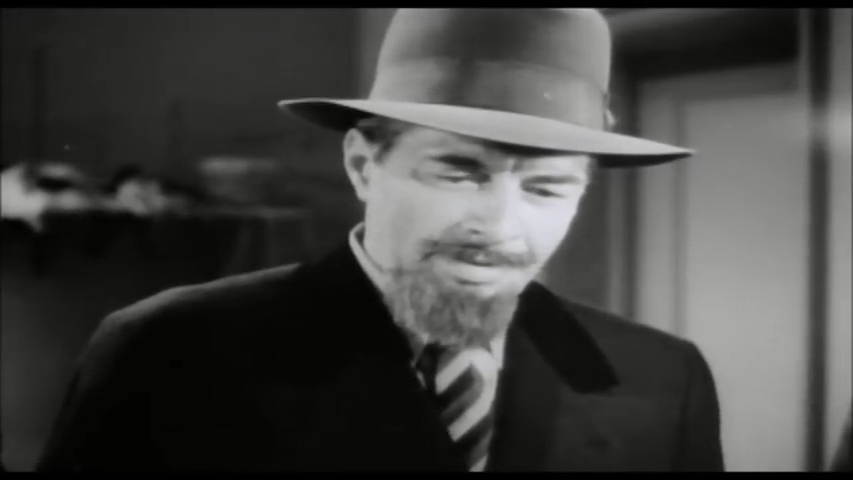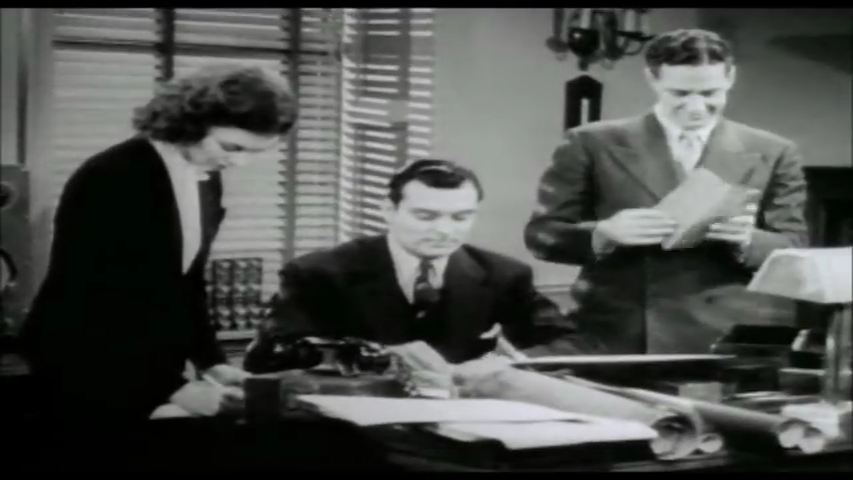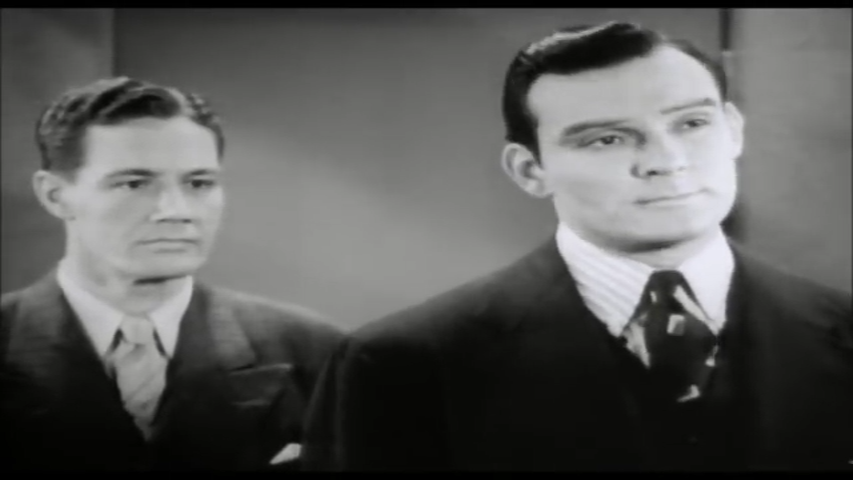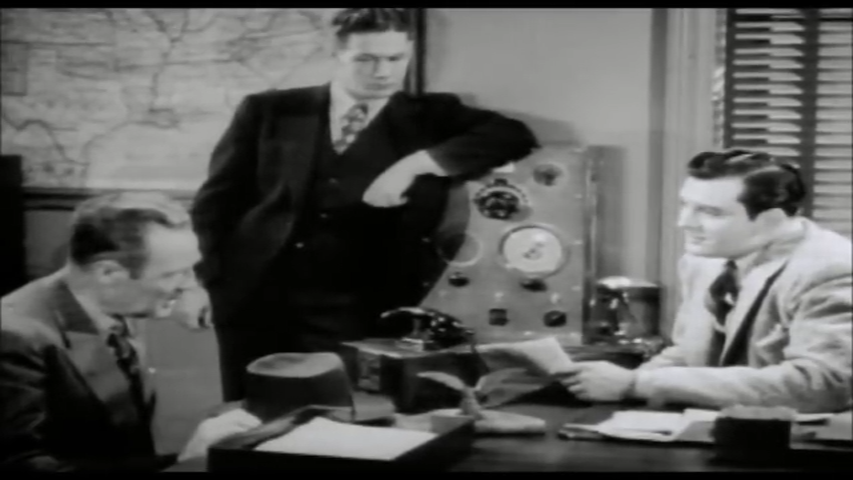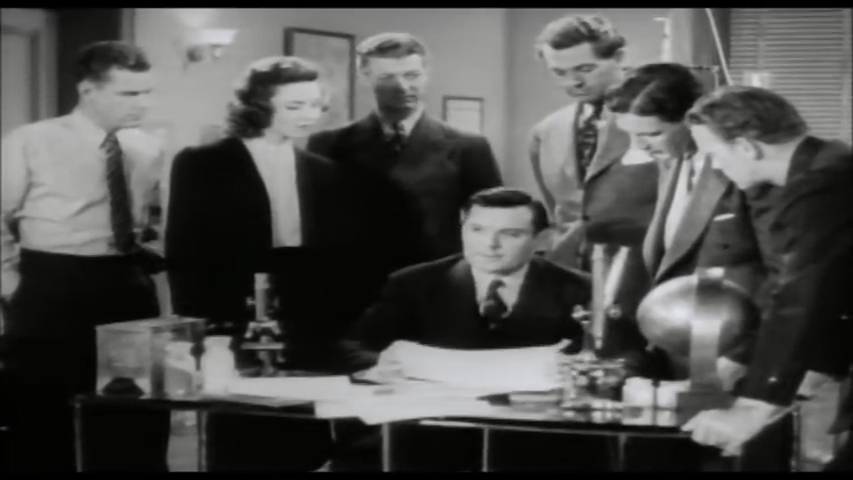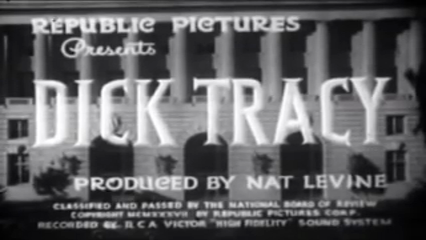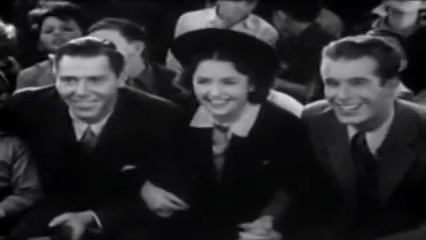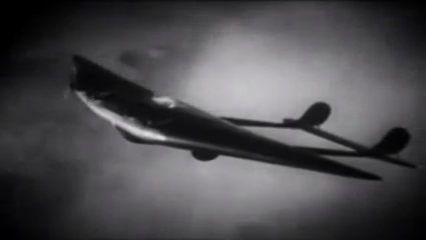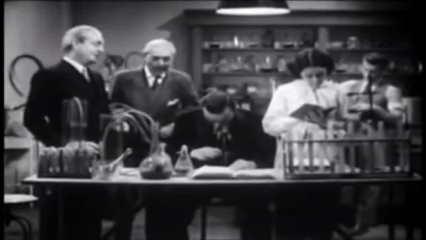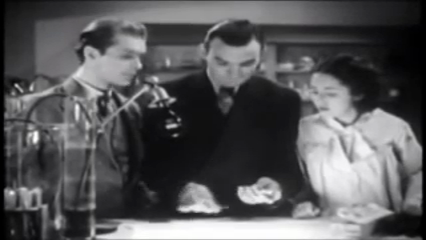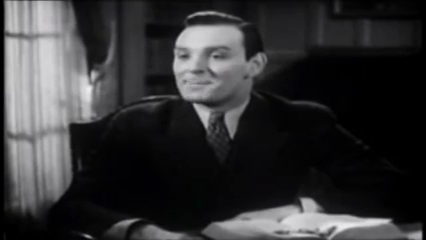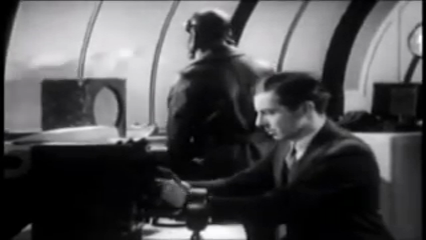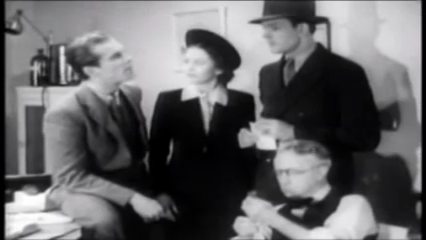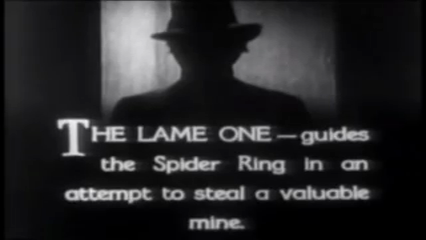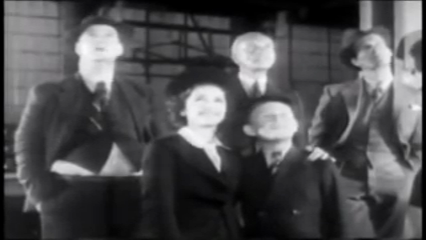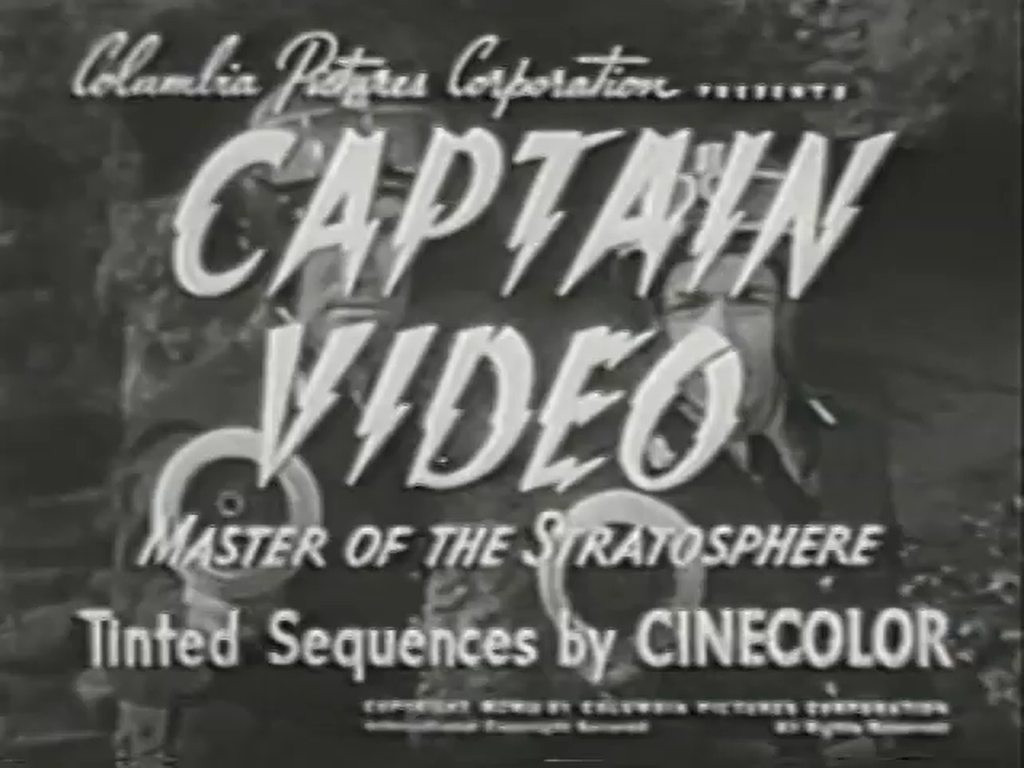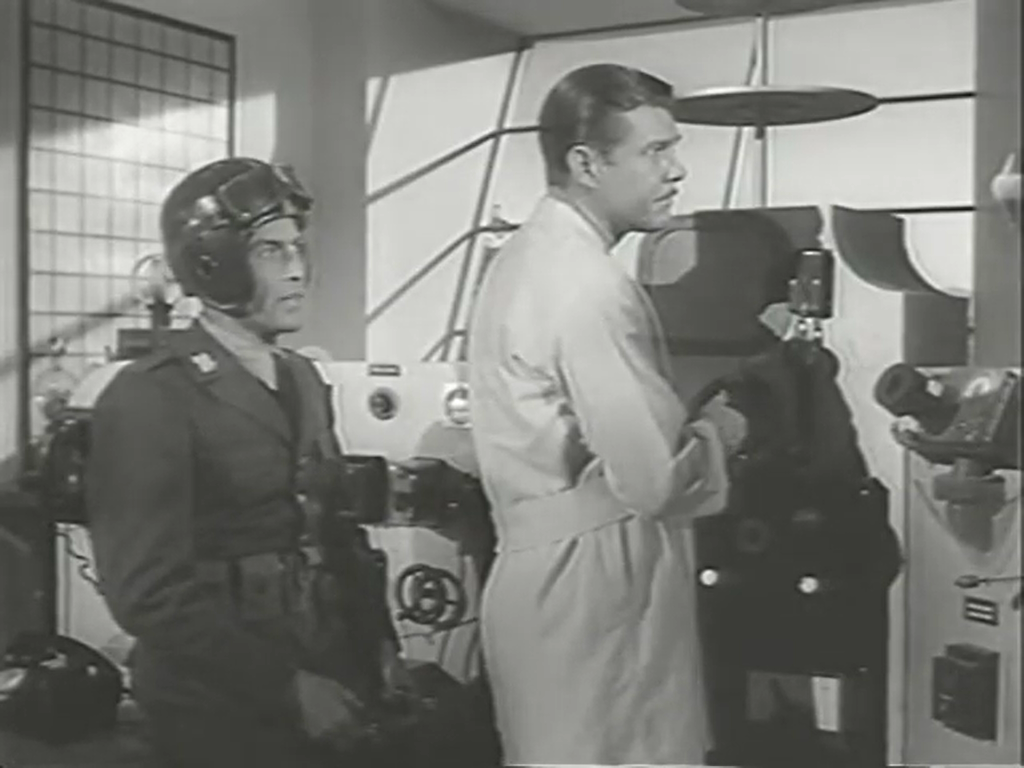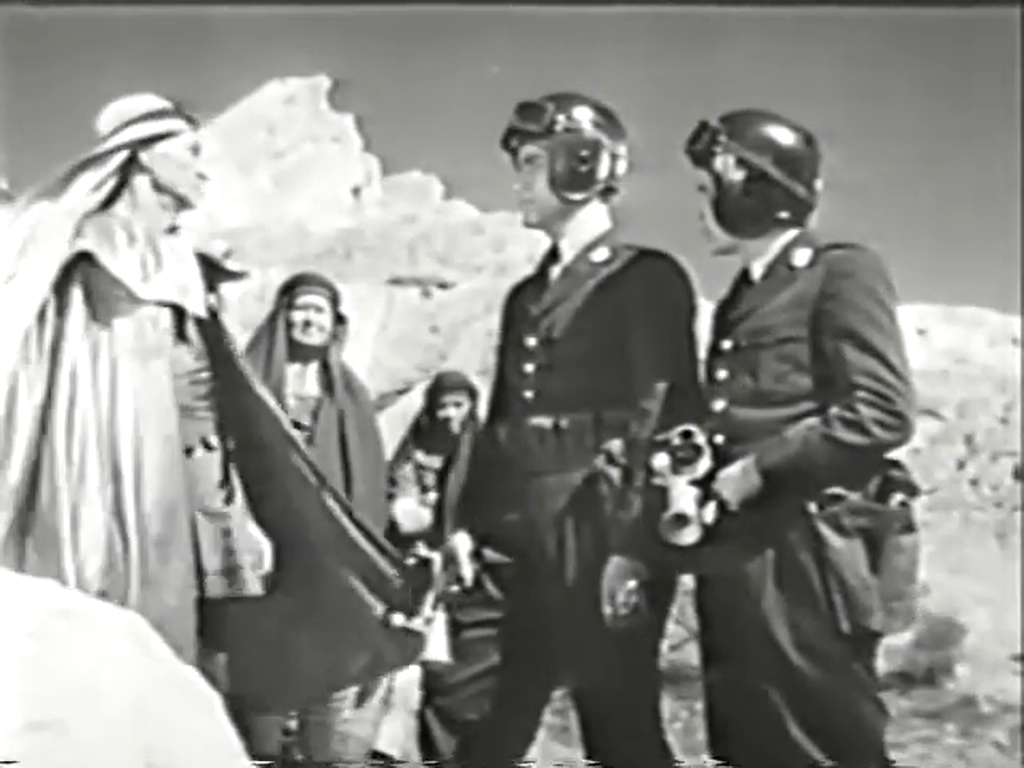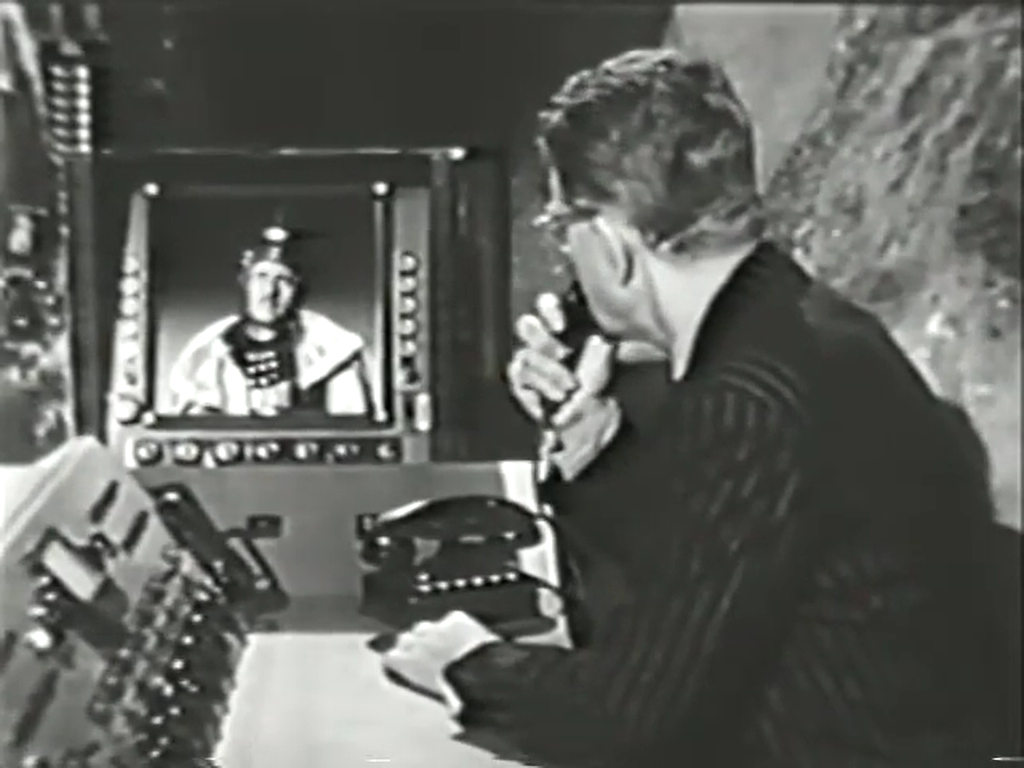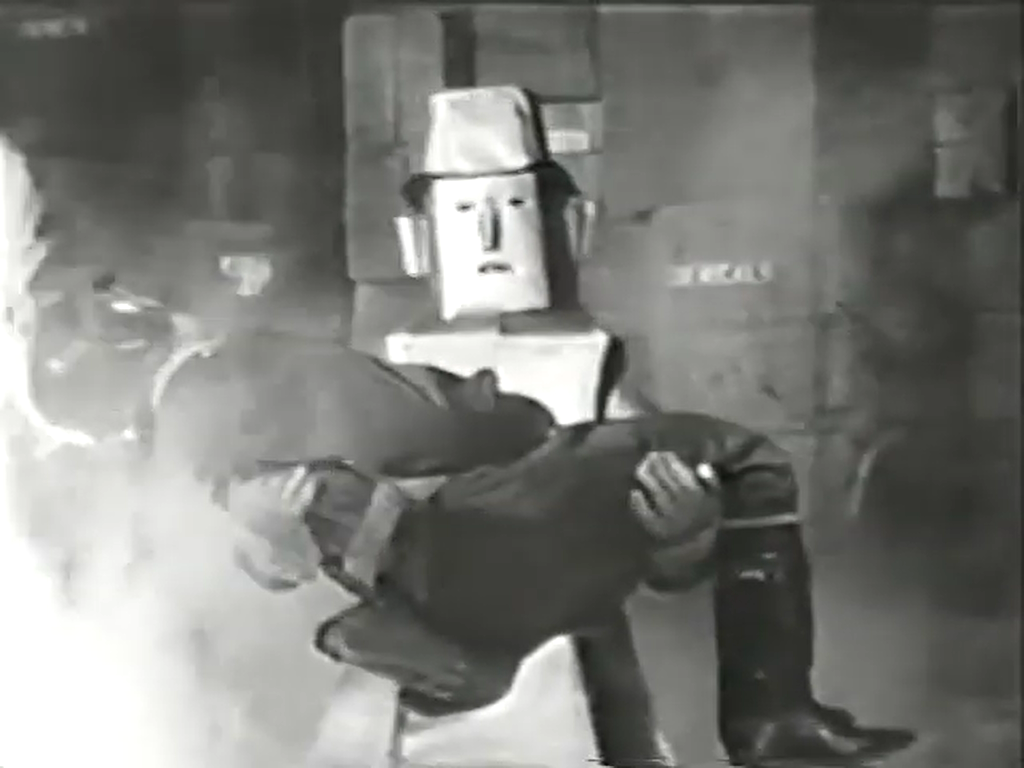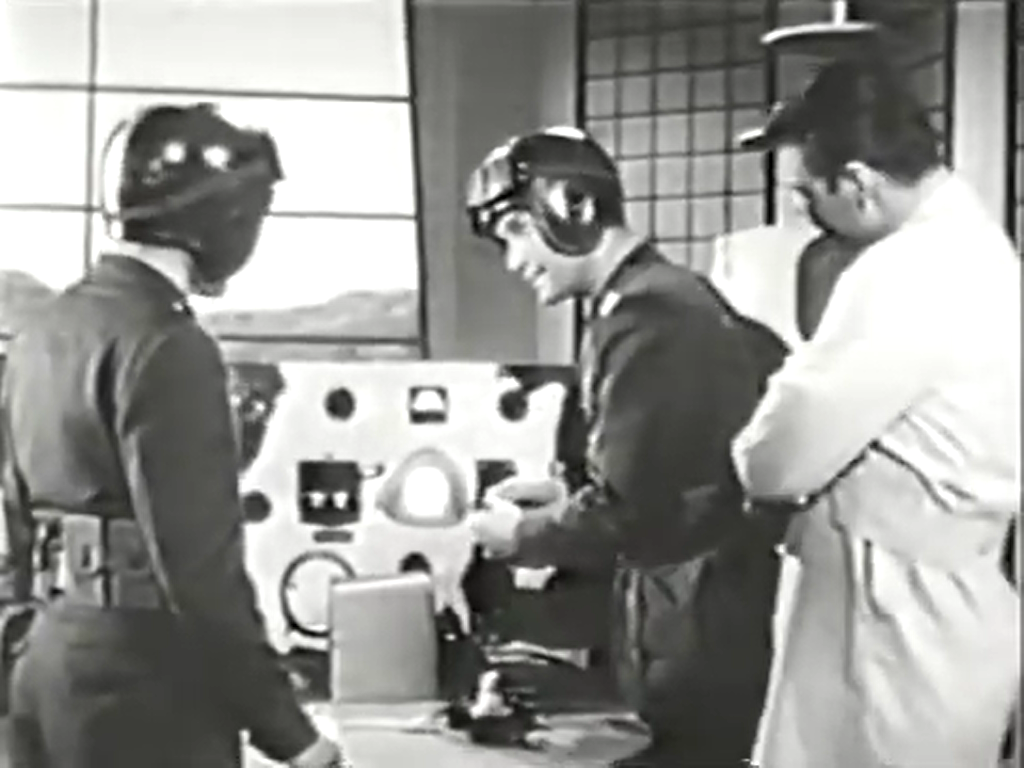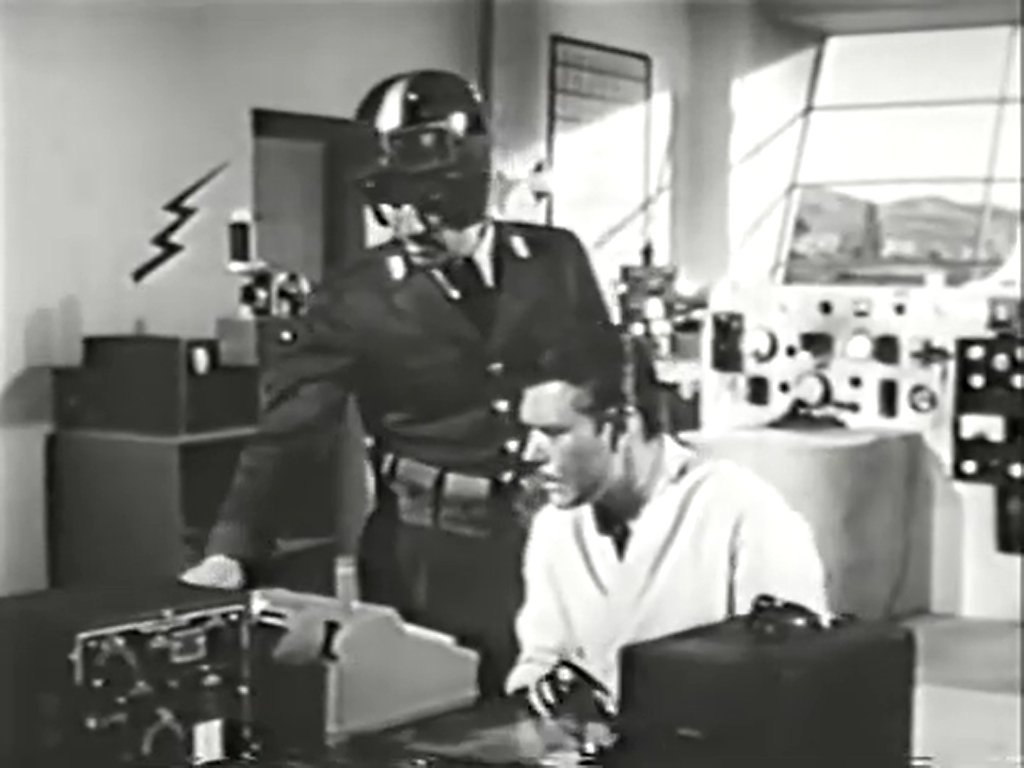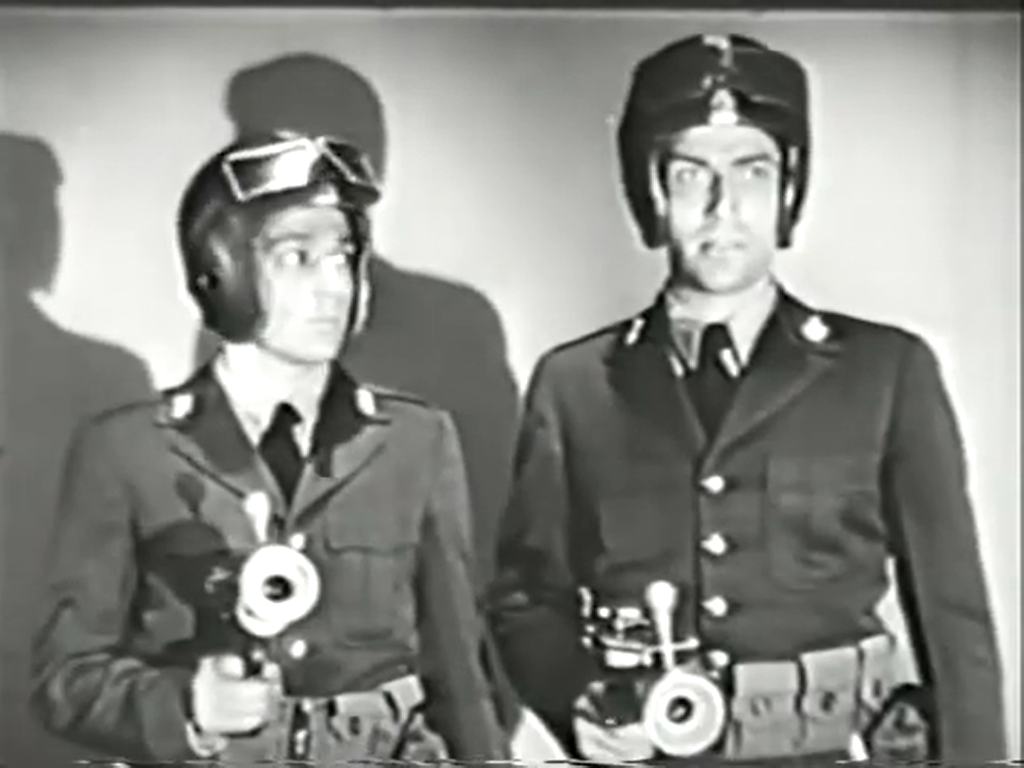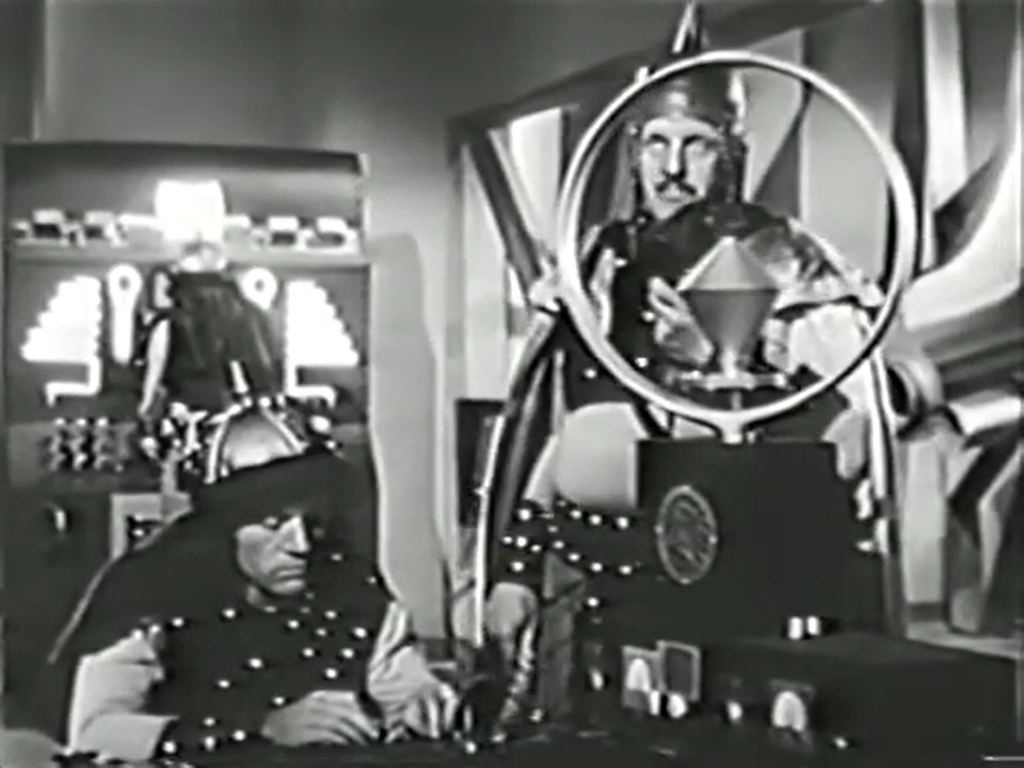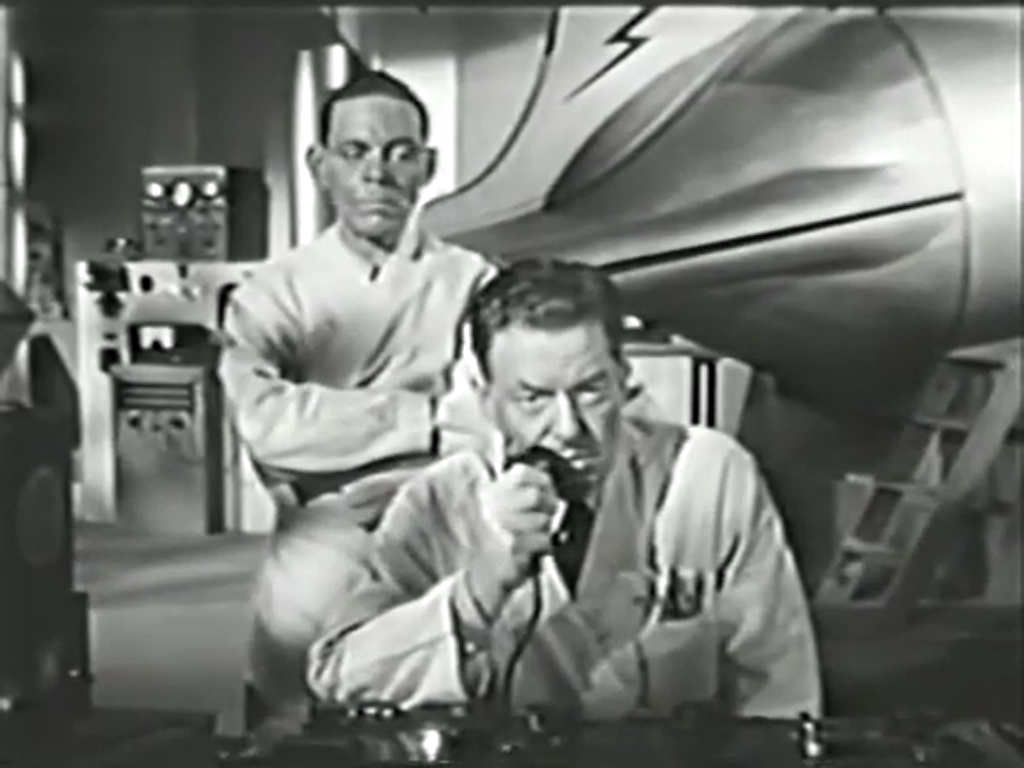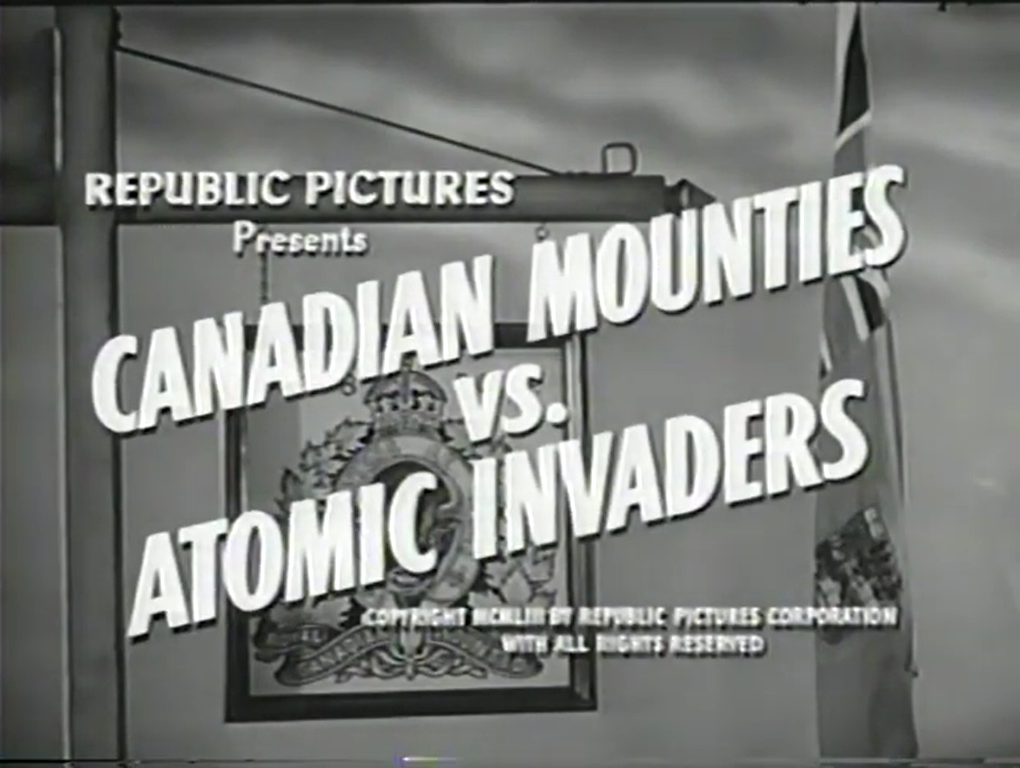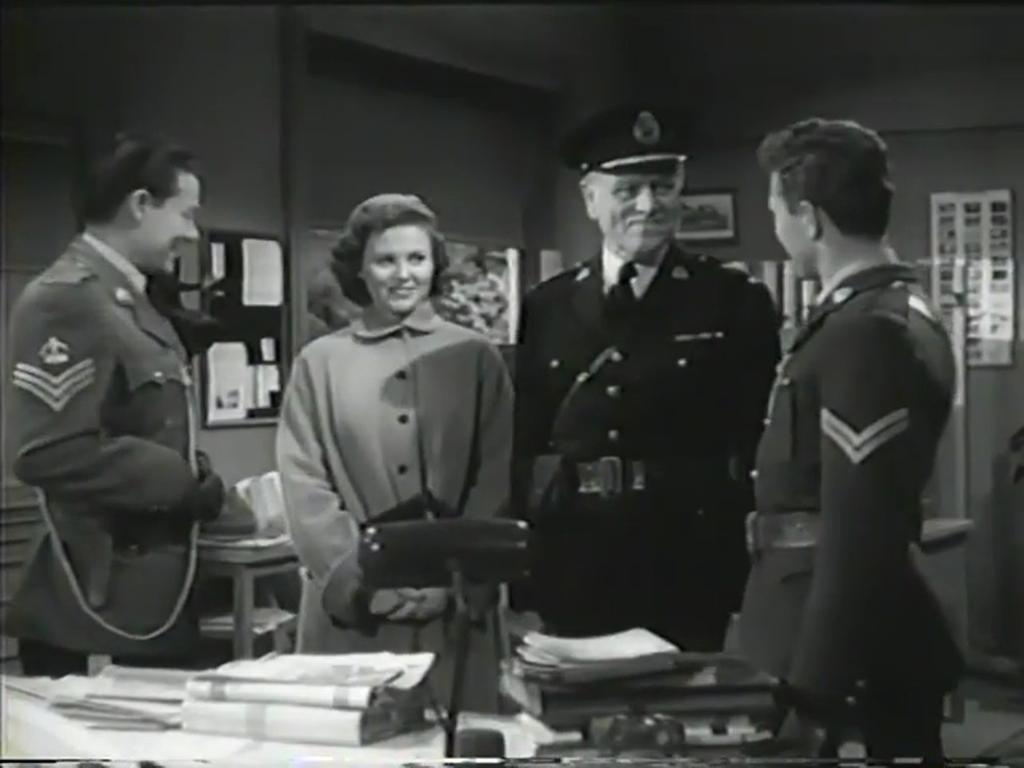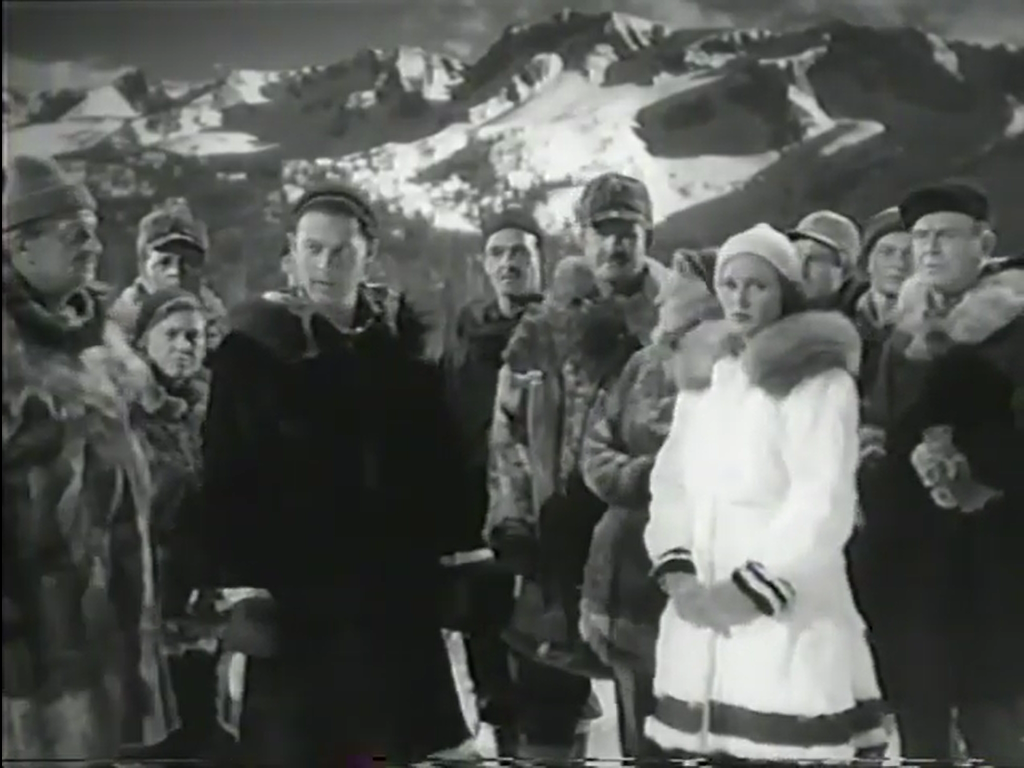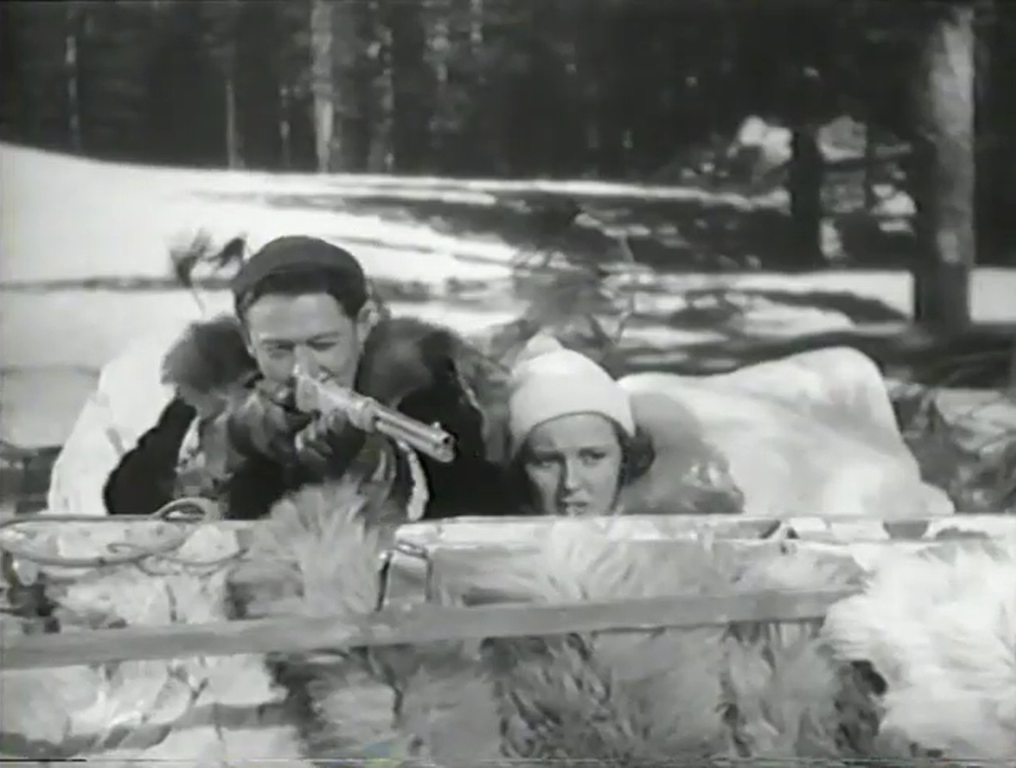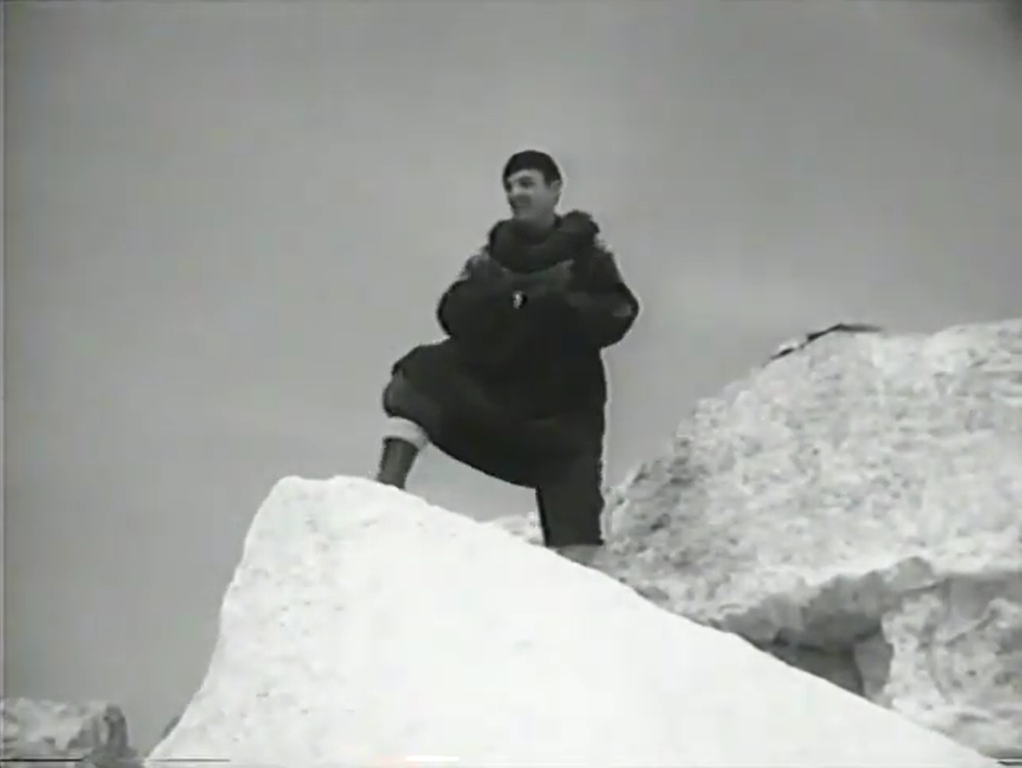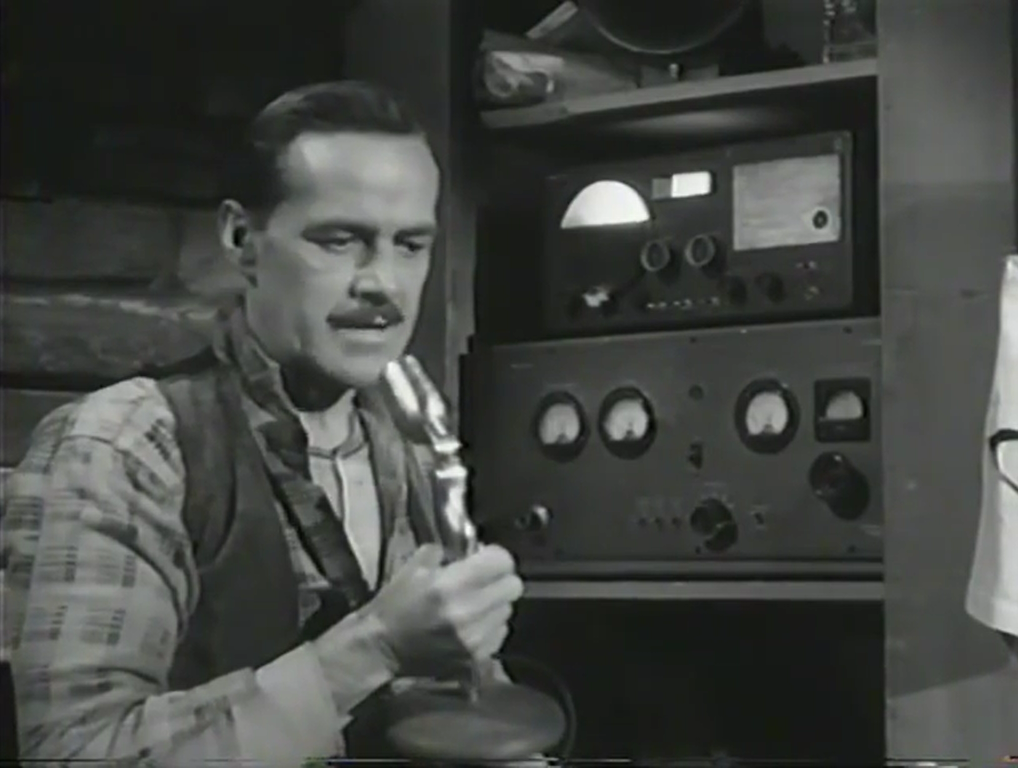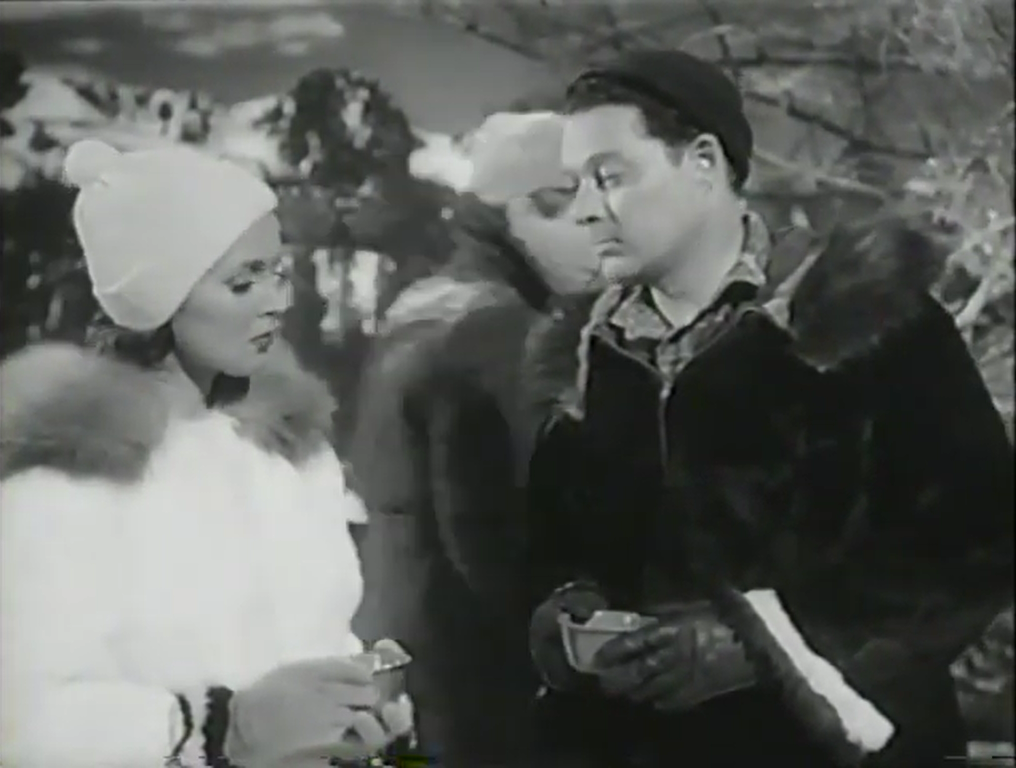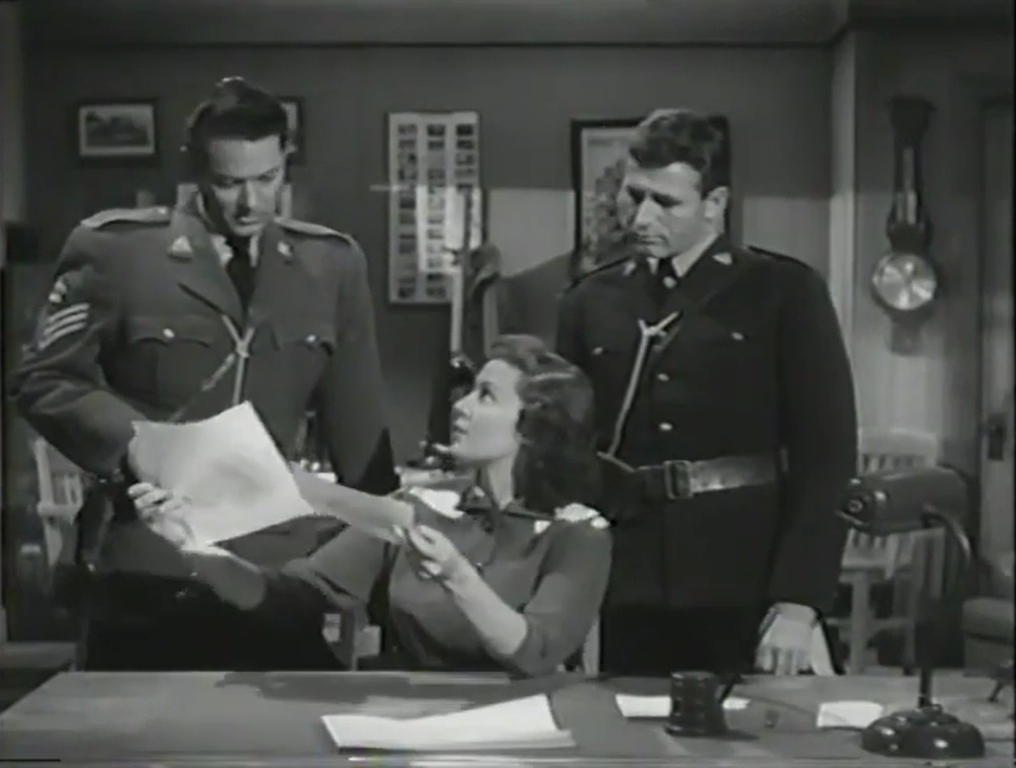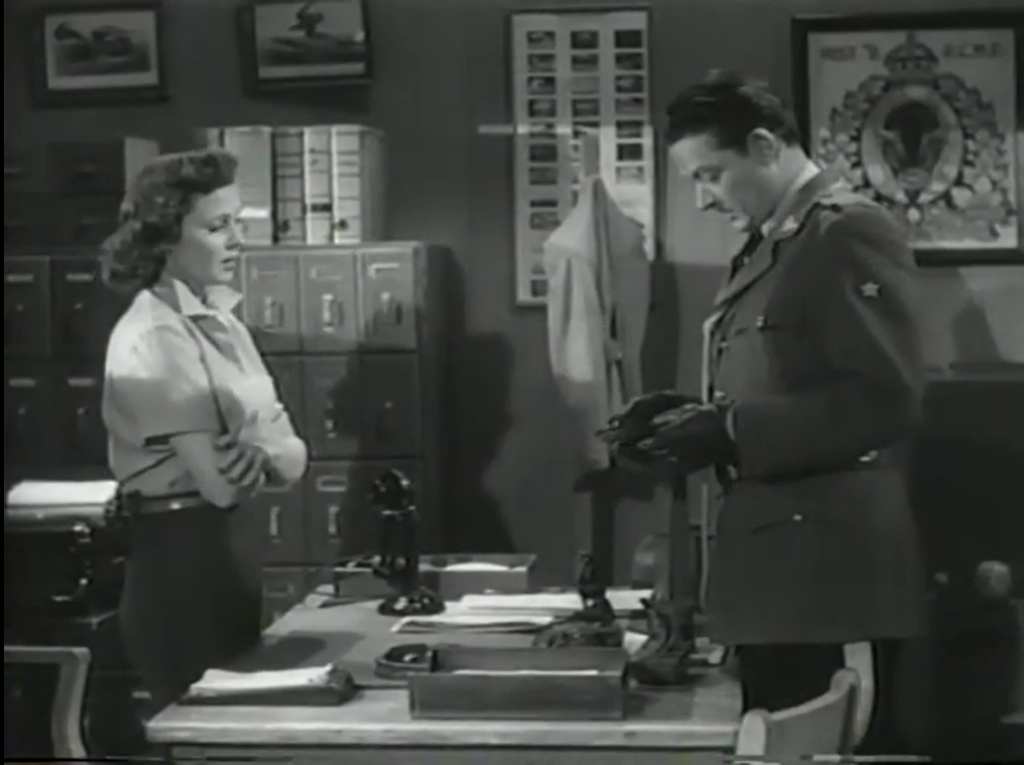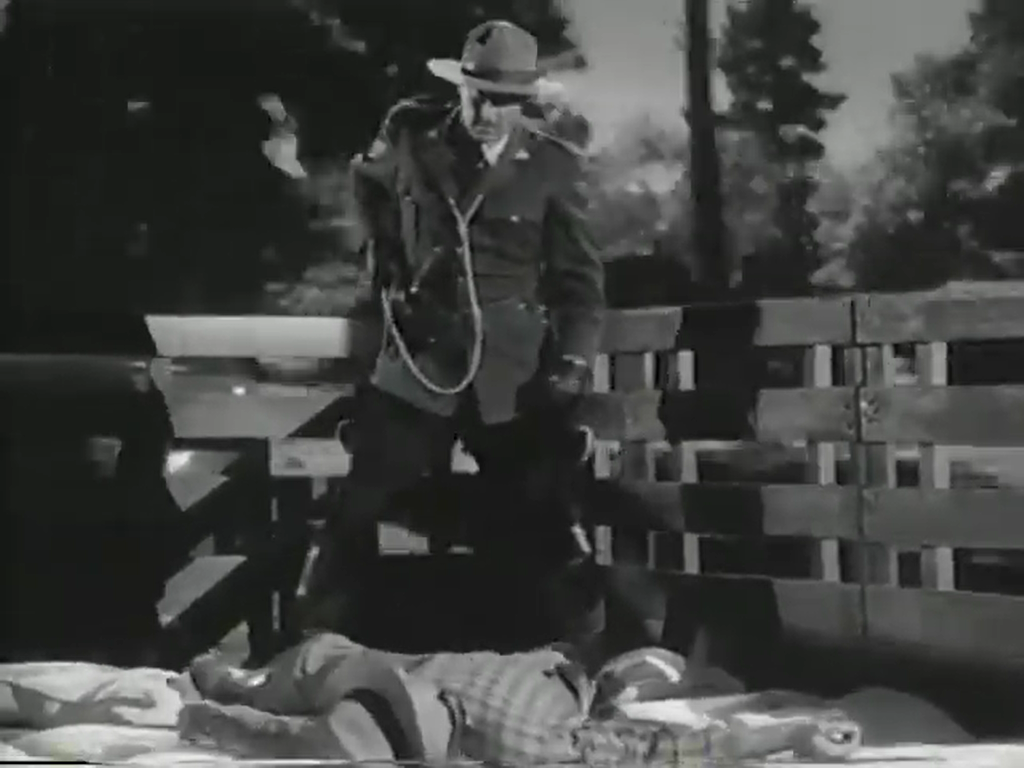-
#428 – The Shadow (1940)
The Shadow (1940)
Film review #428
Director: James W. Horne
SYNOPSIS: A mysterious criminal mastermind known only as The Black Tiger is targeting all of the city’s infrastructure and industries in order to make a fortune. The leaders of these organisations call on Criminal scientist and investigator Lamont Cranston to apprehend the Black Tiger. Unbeknownst to them, Cranston is secretly a masked vigilante who calls himself The Shadow, who takes on the villains without any oversight. The police believe The Shadow and The Black Tiger to be one and the same, and so Cranston must thwart the Black Tiger’s operations in secret while he is also pursued in his alter-ego…
THOUGHTS/ANALYSIS: The Shadow is a 1940 serial composed of fifteen chapters, based on the comics and radio plays of the same name. The plot of the serial follows Lamont Cranston, a criminal investigator/scientist who is tasked with stopping a criminal mastermind known only as The Black Tiger, who is launching attacks on the companies and industries of the city in order to amass a fortune. The plot of the serial is pretty weak: each chapter focuses on a different company or industry that is under attack and Cranston/The Shadow must protect (the target of next week’s chapter is shown in the trailer at the end of each chapter). The structure is quite similar to The Green Hornet, which also focused on various industries under attack by a criminal, and the lead also playing a masked vigilante who is also wanted by the police. There’s no overarching plot or evil plan by the villain other than to just get rich. There’s nothing wrong with villains just being villains, but if there’s nothing to tie the fifteen chapters together in terms of story and consequence, then viewers aren’t going to come back week after week to see how the story continues. Many serials have the same problem, but usually there’s an overarching objective to the serial, such as sabotaging American infrastructure to pave the way for foreign invasion (particularly in the wartime serials of the 40s), but The Shadow is especially weak in this regard.
Lamont Cranston, the serial’s lead protagonist, is a little different from the usual good looking, All-American hero. Victory Jory, who plays Cranston, was typically cast as villains, and his appearance lends itself to that. here though, while being the protagonist, he is also the masked vigilante The Shadow, whose appearance is meant to be more villainous. In his disguise, only the top half of his face is visible, and Jory’s piercing stare definitely has a nefarious look. His iconic laugh, known from the radio series, announces his arrival and definitely strikes fear into his enemies. On top of this, Cranston also has another disguise as a Chinese businessman and petty criminal, which he uses to get information from other criminals. The major problem here is that Jory is white, and using makeup to magically “become Chinese” by squinting his eyes, putting in a set of big false teeth and a fake accent is undoubtedly racist, as if everyone can suddenly no longer tell he is white. It is not uncommon for white actors to portray Asian characters in this era (and for some time after), but the racist caricature he adopts here goes beyond the usual makeup jobs and is wildly unacceptable. The character is very similar to the protagonist’s alter-ego Blinky McQuaid in The Green Hornet, who also provided a disguise of a petty criminal for undercover work. All of these different alter-egos and settings in The Shadow just come across as confusing and dilute the story somewhat. The Black Tiger, as mentioned, doesn’t have much in the way of motivation or character: he is suspected of being one of the company directors who are under attack, but the mystery of his identity is a familiar plot device to those who watch these serials. His ability to turn invisible when he enters the hideout to address his henchman is somewhat impressive, but it begs the question that if he can turn invisible, why doesn’t he use these powers to commit crimes himself? The extent of this power is never explained or explored, and makes very little sense. The rest of the cast are so unremarkable and standards of the serial format that they’re not even worth commenting on.
The cliffhangers for this serial at the end of each chapter are standard stuff, but there’s quite a lot of destruction in them, as roofs collapse on top of our hero and such. Whether he is caught in an explosion, trapped under debris or crashes off a cliffside, the cliffhangers always end the same way with The Shadow just walking away from all of these incidents which should have killed him. Given that he doesn’t have any superpowers, the resolutions are always a letdown and frankly inexplicable. However, the Columbia Pictures serials often had cliffhangers end this way with the hero simply walking away from certain death with no explanation. Since we never see The Black Tiger, all of his orders come from tiger heads which have light-up eyes whenever he speaks, which are pretty cool effects for the time. The settings aren’t anything too special, and I feel like there should have been more scenes of The Shadow actually in the shadows, rather than the mostly brightly-lit settings we got. The Shadow is not the worst serial I have seen, but it has some major flaws; from the lack of substance in the plot to the racist caricatures, there’s plenty of reasons to give it a miss. The Shadow is a decent masked vigilante with the iconic laugh that viewers would have wanted to hear on the screen, but otherwise there’s not much to see or anything memorable about it. You’re better off watching The Green Hornet, which is practically identical in terms of story and characters, but executed much better. -
#384 – Dick Tracy’s G-Men (1939)
Dick Tracy’s G-Men (1939)
Film review #384
Directors: William Witney, John English
SYNOPSIS: F.B.I. agent Dick Tracy has successfully captured the international spy Zarnoff, who has been sentenced to death. However, he manages to escape, and picks up where he left off attempting to steal or sabotage military equipment to sell to the ‘three powers’, as Dick Tracy once again tries to stop him.
THOUGHTS/ANALYSIS: Dick Tracy’s G-Men is a 1939 film serial and the third Dick Tracy serial. In the opening, we see a film showing how F.B.I. agent Dick Tracy successfully captured foreign spy Zarnoff, who has now been sentenced to death by gas chamber. While in jail awaiting his sentence however, Zarnoff is sent a newspaper which is laced with a substance which when ingested, causes him to appear dead and stop breathing before he is taken to the gas chamber. While his body is being transferred, members of Zarnoff’s gang hijack the ambulance and steal his body, subsequently reviving him since the substance caused him to stop breathing before he went into the gas chamber, therefore did not breathe in any of the lethal gas (yes, it sounds a bit farfetched). When Dick Tracy learns of Zarnoff’s escape, he again attempts to catch up with him, as Zarnoff has sworn revenge against Tracy. The story, split into fifteen chapters, revolves around (as you would expect) Tracy attempting to foil the numerous schemes of Zarnoff, which, as is a staple of the Dick Tracy serials, outperforms others in the genre by having plenty of variety and imagination, splitting the time between investigation and action scenes. It still sticks rigidly to the serial format, and is essentially more of the same, but its predecessors were popular, so there isn’t really much need to drastically change them. The story around the spy Zarnoff attempting to sell American secrets to the “three powers” would have been more relevant to the time it was released, as World War II had essentially begun, so the theme of spies and espionage would have been particularly poignant, with the “three powers” clearly being a reference to the axis powers.
One more significant change in Dick Tracy’s G-Men was the thinning out of the cast. A number of the characters do not return, including Mike McGurk and Junior, who mostly provided the comic relief, and so the film does feel a bit more serious, again with the back drop of a world war looming. In fact, Ralph Byrd, who plays Dick Tracy, is the only returning actor. Even though the characters Steve Lockwood, a fellow F.B.I. agent, and Gwen Andrews, Tracy’s assistant still show up, they are played by different actors. The character Zarnoff is of particular interest, as he looks like a cross between Stalin and some east-Asian influences, which makes sense given the time of release, and America’s animosity to that area of the world (there were many serials produced around the second World war that utilised a villain that was made to look Chinese or east-Asian).
The pacing of the film is fairly standard, with a new scheme showing up every two or three chapters to keep things interesting, and the standard cliffhanger at the end of each chapter to entice viewers to return to the theatre next week to the next chapter. The ending sees Zarnoff and Tracy crash a plane in the desert, with the two handcuffed together, they are desperate to find water when eventually finding some, Zarnoff knocks Tracy out and uncuffs itself. When Lockwood shows up and finds Tracy, they see that the water contains Arsenic, and shortly find Zarnoff’s body (offscreen) as he has died from ingesting the water. Not exactly a thrilling conclusion, but they never are after investing so much time into these serials they never end on much of a high note. Nevertheless, Dick Tracy’s G-Men is more of the same, but it still maintains a position well above most of the format in terms of action, pacing and characters.
-
#381 – Dick Tracy (1937)
Dick Tracy (1937)
Film review #381
Directors: Alan James, Ray Taylor
SYNOPSIS: F.B.I. G-man Dick Tracy is on the trail of the criminal gang known as the Spider Ring. They have invented a flying fortress called The Wing and it is Tracy’s job to find a way to stop it and the gang’s evil schemes. Alongside this, he is also trying to find his brother Gordon, who has gone missing, and unbeknown to Dick, has been brainwashed by the Spider Ring to do their bidding…
THOUGHTS/ANALYSIS: Dick Tracy is a 1937 movie serial based on the comic book character of the same name. The serial stars, unsurprisingly, Dick Tracy, who is a “G-man” working for the F.B.I. investigating crimes, specifically trying to bring down the criminal gang known as the Spider Ring, who leave the mark of a spider on their victims before they kill them. Dick also has to find out what has happened to his brother, who has gone missing, and unbeknown to him has been captured by the Spider Ring and been brainwashed into becoming their servant. The serial’s story unfolds across a lengthy fifteen chapters, with the usual serial shenanigans taking place. Despite the length, the serial does a good job of keeping things interesting, and has a number of mini-arcs in the story to keep things varied. Dick Tracy’s character as a criminal investigator plays a strong role in the story, as he is actually investigating the crimes and following the evidence, rather than just showing up and getting into a fistfight like a lot of these serials.
The action scenes are also well varied, with their being chases across land, sea and air. The aerial scenes are probably the most interesting, as they are fast-paced and have plenty of stunts. The real sci-fi element of the serial comes in the form of The Wing: a large plane that resembles a flying fortress crossed with a stealth plane. It is the sort of thing that would not have been seen before when it was released, so it certainly gives the serial some originality. While The Wing plays a large role in the earlier chapters, it appears less frequently in the later ones, which is a shame since it probably had some more potential, but there’s plenty of other things going on so it doesn’t feel like the serial runs out of steam.
As mentioned, Dick Tracy’s role as a criminal investigator gives him plenty to do, and separates him from the similar white-male leads of these type of serials by giving him a unique character trait. The cast of supporting characters is quite large, but they all serve a purpose and you can tell them apart. The comedic relief in the form of the young Junior and his guardian McGurk aren’t overplayed, and provide just enough of a contribution to the story without being distracting. The villains, including the leader of the Spider Ring known as “The Lame One” are also well varied, including the rogue doctor Moloch who performs the operation to brainwash Gordon Tracy (who also has his face changed, which is rather pointless as none of the heroes see his face that would recognise him). The Lame One’s identity is kept a mystery until the end, but if you follow the serial closely, you can probably tell who it is, and it doesn’t act as too much of a revelation. Nevertheless, an overall interesting cast that are recognisable and add different dynamics to the serial.
The special effects of the film are pretty good for the time, and while a lot of the plane stunts are done with models, they are still convincing. A lot of the aerial stunts are pretty implausible and flying the face of physics, but given that cinema goers in 1937 would probably have not been in a plane (or maybe even seen one), it’s not going to break the immersion. Overall, Dick Tracy manages to take the typical aspects of the serial format and excel with them: the action is varied, the story is full of drama and suspense, the characters are well-defined, and there’s plenty of content to keep viewers coming back to the theatre every week.
-
#379 – Captain Video: Master of the Stratosphere (1951)
Captain Video: Master of the Stratosphere (1951)
Film review #379
Director: Spencer Gordon Bennet, Wallace A. Grissel
SYNOPSIS: The heroic Captain Video and his Video Rangers from across the globe help maintain peace on the planet Earth, but when Earth becomes subject to meteor bombardments from the planet Atoma, Captain Video must find a way to thwart the evil schemes of it’s leader Vultura before it is too late…
THOUGHTS/ANALYSIS: Captain Video: Master of the Stratosphere is a 1951 movie serial. The serial stars (as the title suggests) Captain Video, the leader of an organisation called the Video Rangers, who help protect the Earth. When the Earth becomes subject to meteor bombardments originating from the planet Atoma, Video must stop them before they can invade the Earth. The plot resembles the vast majority of sci-fi serials, which copy the highly successful Flash Gordon and caught the genre in a thinly-veiled repetition of its plot and characters for over twenty years. A lot of the story revolves around Captain Video trying to prove that the scientist Dr. Tobor (yes, that is ‘robot’ spelled backwards) is working with Atoma’s leader Vultura, as Video and Vultura try to outsmart and thwart the other’s plans. I think this format and plot structures were gotten away with for two reasons: one, there was no way to re-watch old serials once they had first aired at the theatre, so new ones could come out with the same story and similar characters; particularly since serials such as this would be aimed at kids, who would not have seen earlier serials. The second reason being that the second world war probably didn’t leave much room or money for the development of anything too original or ambitious, as resources would have been focused elsewhere. Nevertheless, by the time this serial was released in 1951, there probably should have been some effort to change the formula or offer something new.
Despite it’s lack of originality in the story department, there’s still a decent amount of variety going on. The early chapters see Video travelling to the planet Theros, where the peace-loving people are under attack by Vultura’s forces, and Video has to teach them to be guerrilla fighters and fight back. Again, this plot structure shows up in many previous serials. The next major chunk of the serial consists in the back-and-forth between Tobor and Video, as they try and outdo each other on Earth. Video and Vultura only meet in the final half of the last chapter, which feels like a waste. The serial however, does keep things interesting with a whole host of gadgets and inventions that would undoubtedly spark the imaginations of youngsters watching. The guns that the Rangers use that shoot out sparks are quite a nice effect of the time. However, the serial often falls into the trap of explaining what is going on and what all these inventions do rather than actually showing them, mostly due to budget constraints, but often the plot is explained before it happens, leaving little surprise or tension. The inventions too have bizarre technological names, and accompanied techno-babble that try to justify the implausible things they do.
Most of the characters are based off the ones on the TV series, with Captain Video being the typical white American male hero that is the star of all these serials. His younger sidekick is strangely only referred to as “the Ranger” and never given an actual name. This is in keeping with the TV series, but other rangers are shown to use their own names, so it’s odd that he doesn’t. Maybe it’s a way to get kids to imagine themselves in the role of the young teenage sidekick, as anyone could be “The Ranger”. There’s also Ranger Gallagher, who does all the technical stuff at Video headquarters, and Vultura clearly has some east Asian influences in his design, again echoing the “Ming the Merciless” type villain that originated in Flash Gordon. One final note about the characters is that while you will expect these serials to only feature a white cast, there is not a single woman anywhere featured in the serials fifteen chapters. Often there is usually a solitary token female character that sometimes serves as the protagonist’s love interest, but there is none at all here, not even in any of the backgrounds. I suppose the lack of a female character could be attributed to the fact this is geared towards a younger, male, audience, who would not be interested in a female character or a romance sub-plot, but having this cast of inter-changeable white men interact with each other really emphasises the monotony of the story at points.
The serial was directed by Spencer Bennet, a veteran of these kinds of serials, so he had plenty of experience in what to do. Some of the effects are fairly decent; as mentioned, the ray guns the Video Rangers use is pretty cool, and their super-fast car stands out with its unique look. There is also a ‘space platform’ which allows transportation between earth and Atoma, which apparently is millions of miles away. Captain Video also has a rocket ship he travels in, which again adds some variety. Some of the effects (such as the rocket ship in flight) are done through using hand-drawn animation, which allows a lot more freedom in terms of effects, although this is not the first time this was done, having been integrated into the Superman serial a few years earlier. Overall, I think I can place the Captain Video serial just above average in the miasma of similar sci-fi serials: it has a lot of the well-worn tropes and characters, but has some decent effects and various inventions that add a bit of extra spice. It’s obviously meant for a younger audience, but there’s enough content for those who haven’t seen such a serial before to enjoy.
-
#377 – Canadian Mounties vs. Atomic Invaders (1953)
Canadian Mounties vs. Atomic Invaders (1953)
Film review #377
Director: Franklin Adreon
SYNOPSIS: Canadian mountie Don Roberts is teamed up with intelligence operative Kay Conway to investigate reports of spies operating in the area attempting to set up covert missile bases in the Canadian wilderness. Don suspects two members of a group of settlers travelling across the wilderness are working for the spies, and so goes undercover in an attempt to expose them. Meanwhile, Beck and Reed, the spies lackeys, are secretly working to discourage the settlers from travelling to the site where Marloff, the foreign spy, wants to build his missile bases…
THOUGHTS/ANALYSIS: Canadian Mounties vs. Atomic Invaders is a 1953 serial. I think the title alone should grab anyone’s attention, so let’s see if there’s any substance underneath it…
Mountie Don Roberts is visited by his boss and intelligence operative Kay Conway to investigate the presence of foreign spies in the area. They believe that some of the settlers moving through the town are working for the spies, and so Don goes undercover with them to try and uncover their identity and motives. The first part of the serial sees Don travelling through the wilderness with these settlers as he tries to foil the spies schemes. This leads a variety of associated perils such as avalanches, dog-sled chases and other such perils of the wilderness. These sorts of sequences you don’t see too often in these serials of the time, so it is something a little different. The main plot of the serial though is nothing too special, with a constant back-and-forth chase between the heroes and villains. The “atomic invaders” are just plain foreign spies and also not very interesting. In 1953, these kinds of serials were dwindling in number as studios turned towards the feature film (and the b-movie), and the introduction of television would mean that these serials would be viewed at home each week rather than getting people to go to the theatre. With that in mind, the chapters are all (with the exception of the first one) just over thirteen minutes long, which seems a waste of effort going to see such a short film. I suppose a positive of this is that the chapters aren’t drawn out with pointless dialogue and scenes that go nowhere…but that said, there is still plenty of it to fill out the time…
After Don foils Marloff’s (the foreign spy) plans to stop the settlers, the spy changes the location of his proposed missile sites which will destroy the U.S. cities to allow his country to invade with little resistance. This “foreign country” is never mentioned by name, but since the cold war was beginning to get underway at the time, I think it’s fairly obvious which country they are referring to. The rest of the serial involves a more usual set-up of fistfights, car chases and cliff hangers that will be familiar to serial watchers. Again, at this time, the format really had been exhausted, and it can offer no real surprises or originality. Some serials hide the identity of the villain until the very end so as to maintain a sense of intrigue throughout, but this serial does not. It might have been a good idea to keep the identity of Smokey, a village resident who is Marloff in disguise, a secret until the end. Instead, it reveals it almost instantly, and the conflict between the heroes and villains really lacks any dynamic.
Given that the film has a variety of scenes in different locations, there is a lot of stock footage used and shots in the wilderness are cobbled together in a studio with painted backgrounds that look rather unconvincing. The chase scenes in cars and boats look alright, and the explosive cliffhangers have an impact, but the format leaves every twist in the story all too predictable, and despite the bizarre title, Canadian Mounties vs. Atomic Invaders fails to contribute anything unique to a formulaic format.
